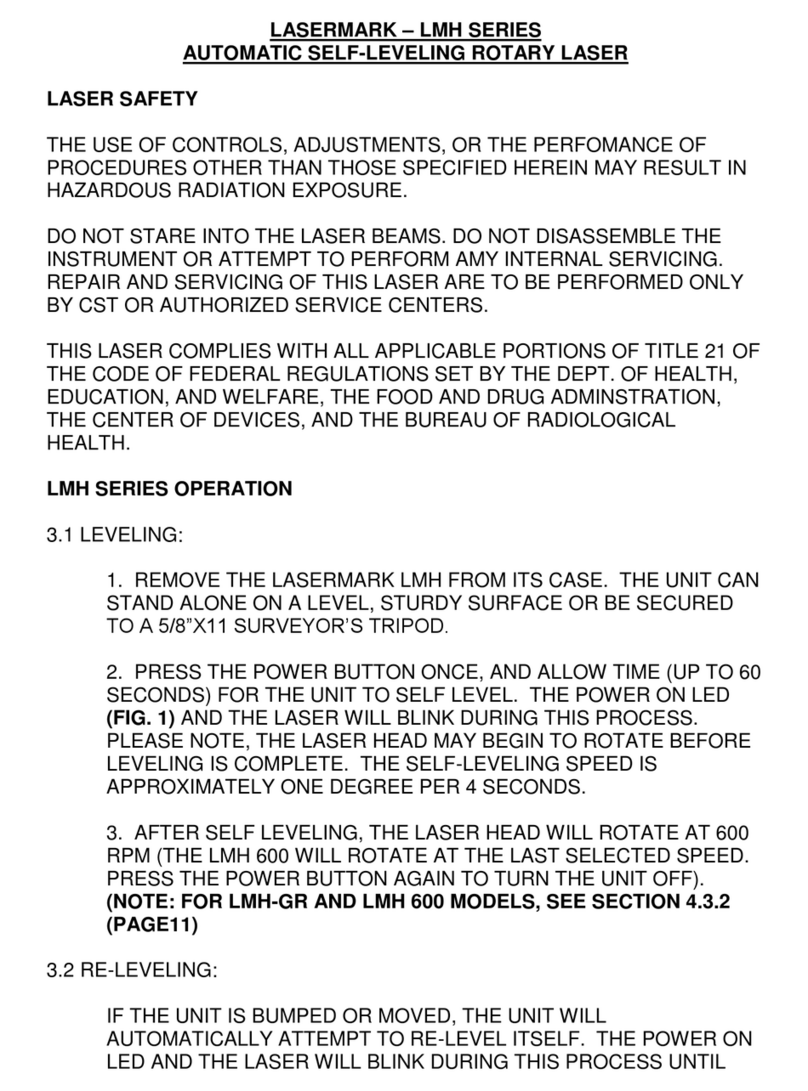
10 • LMH Series Rotary Lasers
X—AXIS ERROR
Y—AXIS ERROR
SPINDLE ERROR
X—AXIS ERROR
Y—AXIS ERROR
SPINDLE ERROR
LMH600
LMH
3.2 Re-leveling
If the unit is bumped or moved, the unit
will automatically attempt to re-level
itself. The Power On LED and the laser
will blink during this process until the
unit is level once again. The laser head
will resume rotation.
On the job site, it may be necessary to
prevent re-leveling in order to prevent
inaccurate measurements by the opera-
tor. The LMH’s Anti-Drift System (Section
3.3) is used for this purpose.
3.2.1 Axis Drive Error
If the LMH is set up or tipped beyond its
self-leveling range of ±5°, the laser head
will initially attempt to level; however,
when the self-leveling limit is reached,
the LEDs will blink, indicating an axis
drive error (Fig. 2). Turn the LMH off,
move the unit into a more level position,
then turn the unit on again.
3.3 Anti-Drift System (ADS) (LMH, LMH-C, and LMH-GR only)
By default the ADS feature is ON. The default setting of the ADS func-
tion may be set to ON or OFF. When the unit is OFF, press and hold
the MANUAL MODE (for LMH-GR, DOWN ARROW button) and then press
the POWER button. Once the unit is on, turn the unit off for 15 Sec
and then back on. ADS will not be the default when unit is turned ON.
To make the unit return to ADS as default, repeat these instructions.
When the LMH Series laser is first turned ON, the ADS feature does not
begin recording for 1 minute. This allows the instrument to be set up
and adjusted.
If after 1 minute, the unit is disturbed and the ADS light is flashing
it is necessary to check any bench marks that have been made and
ensure the proper "HI" (Height of Instrument). After the flashing ADS
has been reset, by pressing the ADS button one time, you will have an
additional minute to set and check your measurements. To turn ADS
off press the ADS button once. This will put the unit into normal Auto
Self-Leveling mode.
Fig. 2




























